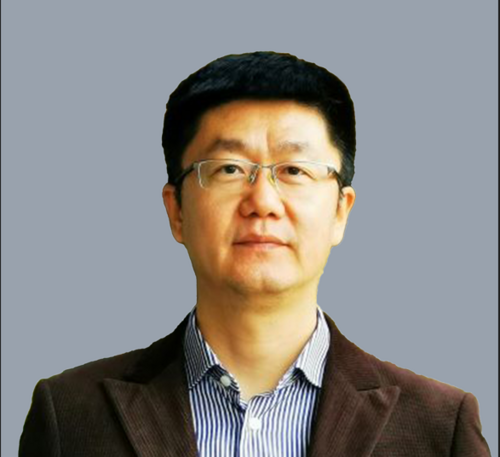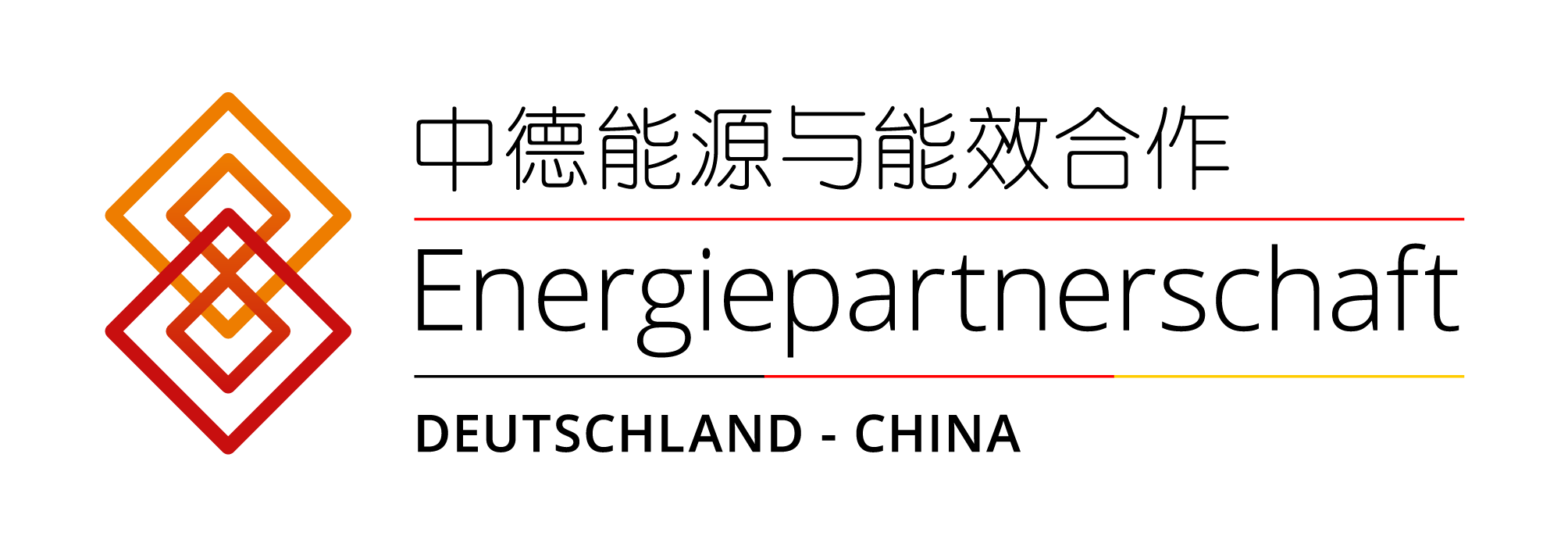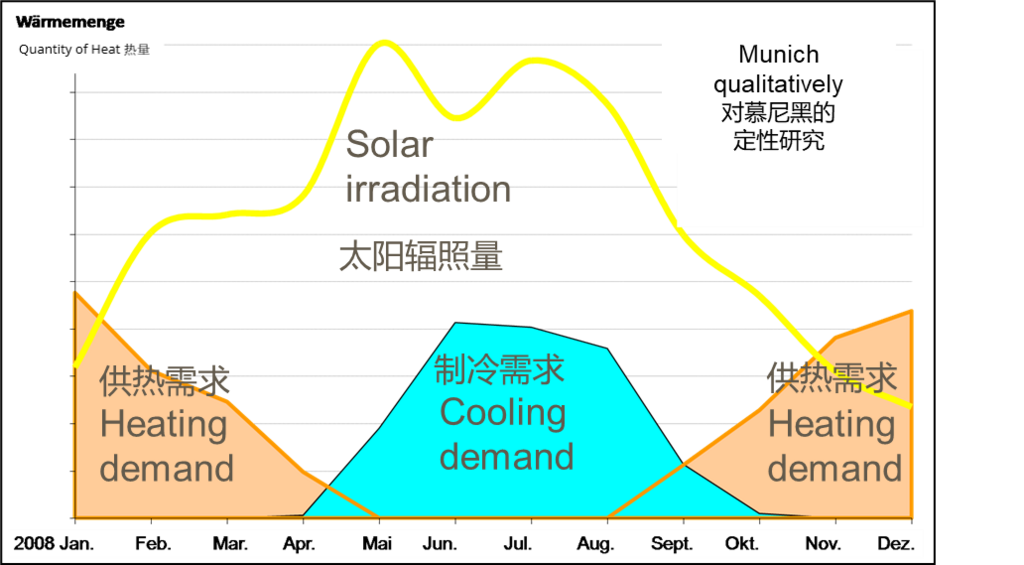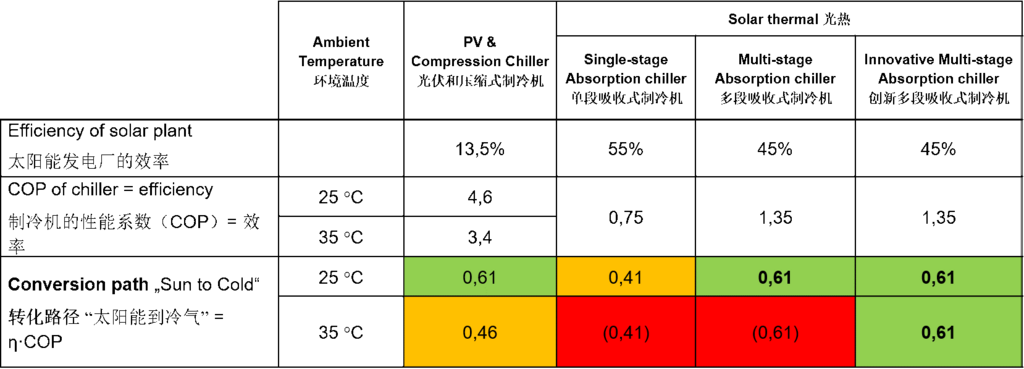Based on simplicity, cost reductions, and attractiveness of currently available products, Chinese experts view cooling based on PV as more likely to be commercialized at scale in the near-term, and the workshop highlighted some examples of rooftop PV installations that contribute to supplying electricity for data center cooling. Moreover, experts noted that rooftop solar provides a degree of insulation to the building by absorbing some of the heat from solar irradiation, thus lowering the cooling demand for the building.
Key findings of the exchange – 2: status quo of coupling renewable energy and cooling
For the cold chain, experts noted that there are various aspects of cooling to address: pre-cooling accounts for 21% of cold chain cooling electricity load, quick freezing 10%, and the vast majority of cooling load (68%) for ongoing bulk storage. Transportation is a minor part of cooling load but replacing diesel with renewable energy from small solar attached to the truck or container roof can offset significant emissions.
For the building sector, space cooling is set to become the single largest user of electricity. However, due to a combination of factors such as a lack of clarity on the regulatory direction of green or low-energy cooling, lacking economic incentives, and others, a clear way forward for reducing the burden of space cooling has so far not yet arrived.
Regarding the situation in Germany, German experts noted that renewable cooling until recently has not figured prominently in the energy transition, but cooling is now recognized by the government and included in the strategy for the building sector in Germany. The payback period for renewable cooling solutions in Germany is around 10 years, compared to 3-5 years in the sunniest countries of southern Europe. In general, it should be noted that in Germany commercial cooling applications play a larger role than residential cooling, because in Germany ambient temperatures are lower on average, making residential cooling in summer less important than it is in China.
In China, the government has repeatedly tightened building energy standards and experimented with zero-net energy buildings as well as renewable cooling. Several renewable cooling pilot projects have been tried, but generally on a one-off basis, as the economics were unattractive until recently.
Solar-based air conditioning (AC) technology has made great progress in China and has been successfully used in many different applications. The improvement of thermal insulation of building envelope and the energy-efficient operation of buildings are the two prerequisites for the viable application of solar ACs.
Solar thermal AC and ground source heat pumps (GSHP) are an efficient combination of power-to-heat and AC. In summer, a solar-driven absorption air conditioning unit can provide the required power, while in winter heating load is firstly served by solar energy and supplemented by GSHP when irradiation is not enough, making the building independent from municipal heating. This way of coupling renewables with cooling (and heating) is much more efficient than AC and a gas turbine.
The utilization of renewable energy for existing cold chain equipment is very limited, occasionally solar thermal cooling units (absorption) have been used for pre-cooling storage. PV cooling, in combination with storage batteries or ice thermal energy storage, is promising for future applications, with its performance enhancement and cost reduction.
A practitioner from a commercial application case of PV and cooling stated that if only photovoltaic power generation and carbon costs are considered, the economic recovery period of the project typically is very long. If combined with other applications, such as heat insulation on the roof of cold storage to reduce the energy consumption, the economic benefits can improve greatly and facilitate wider application.
Key findings of the exchange – 3: barriers and policy instruments
Germany: German experts cited a range of barriers, including low customer awareness, the need to create standardized package solutions for different customer types to substitute for existing components and make application of the technology more accessible. Moreover, so far, no definition for sustainable cooling exists in the European Union. A clear definition of renewable cooling is necessary to determine product and system design standards, efficiency requirements, and eligibility for subsidies and other incentives. This definition might take a similar shape as existing sustainable heating definitions which determine efficiency based on the total system efficiency, rather than individual components. It also may include criteria such as the type of energy input and heat sink.
Germany provides subsidies to a range of non-residential applications for sorption cooling (up to 50% of eligible costs) as well as hot and cold-water storage. Germany’s “National Climate Initiative” supports energy efficient cooling systems in commercial applications. Furthermore, Germany requires a certain share of renewable heating and cooling in new buildings. Thus, regulatory and financial measures have to work together to promote renewable cooling.
China: Currently, there is no subsidy for renewable cooling in China. Rather, subsidies target energy efficient buildings or solar PV installations—not cooling specifically. As mentioned above, the existing building standards and economics of low-carbon cooling technologies do not provide sufficient incentives for increased application of these technologies. Stronger financial incentives or preferential loans, as well as stronger mandates for using renewable energy for heating and cooling could therefore promote renewable cooling in China. As in Europe, renewable cooling still stands to receive a clearer definition in China to enable more targeted support.
Recently, the Ministry of Housing and Urban-Rural Development (MoHURD) has approved the national standard Generic Specifications for Building Energy Efficiency and the Utilization of Renewable Energy, in force from 1 April 2022. It is a mandatory construction code requiring that the utilization of renewable energy should be included as an important part of the master plan of new building/complex designs. It also requires that the statistical report on building energy consumption indicate how much renewable energy has been used.
Future vision
The exchange in the workshop demonstrated that mature technologies for coupling renewable energy and cooling exist that are becoming increasingly competitive. Still, application is hampered by low awareness, and less favorable short-term economics compared to incumbent technologies. More stringent and ambitious building codes and financial support can help push the adoption of these technologies. Moreover, aspects like product design innovation can play an important role by simplifying technology application so that customers can adopt it more easily. Renewable energy and cooling also must be taken as part of holistic solutions including building insulation and design. Furthermore, clear definitions must be found to enable tailored policy support.
If these conditions are met, cooling based on renewable energy could become the new normal for new buildings and can make an important contribution to meeting climate targets in China, Germany, and globally. Both China and Germany have backed the Breakthrough Agenda at the UN Climate Change Conference (COP 26) in Glasgow, vowing to scale up and accelerate the development and deployment of the core technologies required to drive down global carbon dioxide emissions. Decarbonising cooling through coupling with renewable electricity goes hand in hand with these objectives and should receive the necessary attention in the upcoming decade.
Commissioned by the German Federal Ministry for Economic Affairs and Energy (BMWi), the Sino-German Energy Transition Project is part of the Sino-German Energy Partnership and focusses on promoting a low-carbon energy policy in China and introduces German experiences of the energy transition into advising the Chinese government and energy policy-related think tanks. To address the challenges raised from the shift from fossil to renewable based clean energy system in China, the project focuses on topics ranging from distributed energy solutions and power market reforms, to tapping flexibility potentials, coupling the sectors using carbon-free hydrogen, and energy efficiency.













